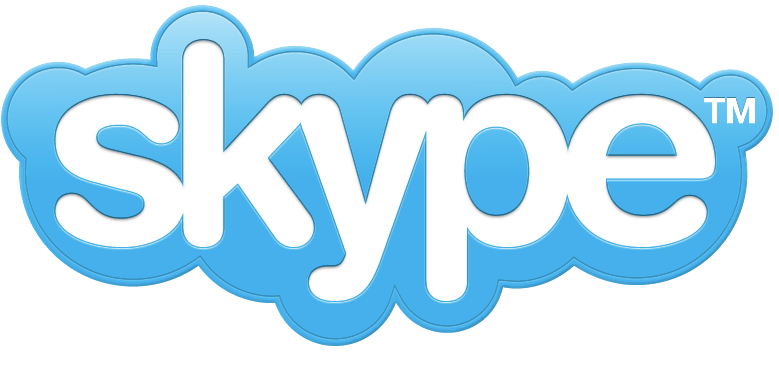At Time Doctor, we work with staff members in more than nine different countries – as you can imagine, team collaboration has a range of unique challenges. There are a number of tools that we use in our company, most of them are free. With over 10 years of experience under our belts, we’ve tried the best and worst of many collaborative tools – we thought it would be valuable to share the tools we we use and what exactly we use them for;
Google docs – provides free online spreadsheets and document management with a Gmail/Google Account. The spreadsheet feature is particularly useful when you need to have multiple people working on the same spreadsheet at the same time (something you can’t do with Dropbox). It doesn’t have all of the features of Excel, but it’s very useful for collaborative editing of documents (including text files). You can use Google Docs effectively as a company “wiki” where anyone in the company is able to add any information to the document.
How we use Google Docs: Domain management, financial reports, feature suggestion lists, payroll coverage, performance appraisals, ranking reports, login information, directory lists and online resources.
Jing Project – This is a fantastic free collaboration tool (although you need to pay for some features). It allows you to take a screen or video capture of anything on your desktop. Screen captures can be easily annotated, and you can record your voice along with any video to easily explain something. You can upload the capture to Screencast.com and they’ll turn it into a simple link where anyone can view the capture. This is perfect for communicating with designers for example when you wish to write comments and explain to a designer what needs to be changed. Here is an example: http://screencast.com/t/GuTz0hjDteI
How we use Jing: communicating with designers and developers, creating training and instructional videos for induction, walk-throughs when screen sharing isn’t an option because of different time zones.
Skype – if you’d told someone you’d be able to have a meeting with five different in different countries 20 years ago it would have seemed like an absurd notion (particularly for if you mentioned that it was free). Skype is now common place and has become the standard for voice calls over the internet (as well as chat, video conferencing and file transfers). It’s free to use across a number of devices, including iPhones, Nokia, Symbian and just about every operating system known to man. More than 520 million people worldwide use Skype – if you haven’t joined the party yet, you should download it and create an account today.
If you’re an existing user and chat or video conferencing is part of your business, you might want to think about how to make your Skype usage more productive; Firstly you want to make sure that team members are not distracted by messages from friends. So consider a policy where all team members have separate Skype accounts for work, and the rule to only use this account with work contacts. Also if a text chat discussion starts going past a few sentences at a time, it’s usually faster to switch to a quick phone call and discuss thing the old fashioned way. Note: we are working on some specific productivity features for Skype which will give you reports of how long you chatted on Skype each week and with which people.
How we use Skype: Training, quick questions to other team members, all of our phone calls (including to clients), video conferencing, daily meetings for our development team, simple screen sharing.
Screen sharing technology - Skype allows you to share your screen to another user, and Jing allows to record your screen – If you need something extra, there are some great screen sharing technologies around which are perfect for technical support or sharing information that needs a visual demonstration on a person’s computer screen. There are several companies that provide this technology, the ones we recommend to try are: Yuuguu , Team Viewer and Dimdim.
Drop Box – Is one of those ideas that’s so simple you can’t help but wonder why you didn’t invent it yourself. It makes file sharing a breeze and nearly guarantees that you’ll never need a USB storage device ever again. Whenever you add something to your Dropbox folder it will automatically update to the other people that you shared the folder with (or another computer that you might use at home). As an alternative to Google Docs for example you can put an excel spreadsheet in here and then when one person makes a change to the spreadsheet and saves the changes it will be available to others with the shared folder (Google docs however is better for simultaneous edits where two people are editing the spreadsheet at the same time). With Drop Box if there are simultaneous edits, two separate versions are created and you then have to manually edit and combine the two documents.
How we use Dropbox: sharing training materials, files, sharing files with clients, backing up documents, images, passwords, accessing files from multiple computers.
Mantis – is an online bug tracking script (free under GNU) – It’s a great way to record and log any bugs, improvements or feature requests – it’s designed for development teams but you could probably use it for any issue management collaboration where teams are involved. For a fee bit of software it has an impressive feature list. You need your own server to install and use Mantis.
How we use Mantis: Bug tracking, feature requests – We use Zendesk for our support tickets and knowledge base, Snapabug to for instant chat, issues are forwarded to Zendesk using the API and anything that needs to be fixed ends up on Mantis.

Freshbooks – is simple to setup and is probably the most widely used web based invoicing application. Freshbooks has a neat feature set and allows your staff to manage and add time to a company invoice. It also has some neat add-ons like Basecamp integration. We have plans to integrate Time Doctor with Freshbooks with in the next 6 months, and it will automatically sync clients and projects between the 2 platforms. Not really a “team collaboration tool” but a great tool for business.
How we use Freshbooks: invoicing clients, managing billable timesheets, creating estimates.
Basecamp – is an online collaboration tool which can be used to effectively manage projects, tasks lists and team communication. It takes a very nuts and bolt approach to optimizing workflow and is far less complicated than many of their main competitors like Central Desktop. There’s an increasing number of new collaboration tools that are similar to Basecamp – most of them are hit and miss or get bogged down because of feature overkill.
How we use Basecamp: managing tasks assignment, managing projects, communication and team spaces. We are using Basecamp mainly for internal messages and discussion now as Time Doctor (see below) effectively manages most tasks and do lists.

Time Doctor – Last but not least - think of it as the infrastructure for your virtual business. It’s like having a “virtual office” and fills in the gaps that other applications seem to have forgotten about.
You can use Time Doctor for time personal and team time tracking so that you know exactly what everyone is working on and how long they are spending on these activities. It increases productivity of a virtual team in multiple ways , and helps to prevent productivity problems such as personal Internet use during work hours. Time Doctor can also be used for monitoring attendance, which is sometimes difficult with a virtual team.
Time Doctor is a great tool for collaboration in virtual teams because it helps managers and team mates to know at all times what other team members are working on. Daily reports to managers show the top priorities of their team and the tasks accomplished in the previous day.
How we use Time Doctor: Managing to do lists, managing attendance, automatic time sheets, website monitoring, application usage monitoring, automated daily reports, improving productivity.
The 8 best collaboration tools for virtual teams | Time Doctor - Time Management Software






This comment has been removed by the author.
ReplyDelete